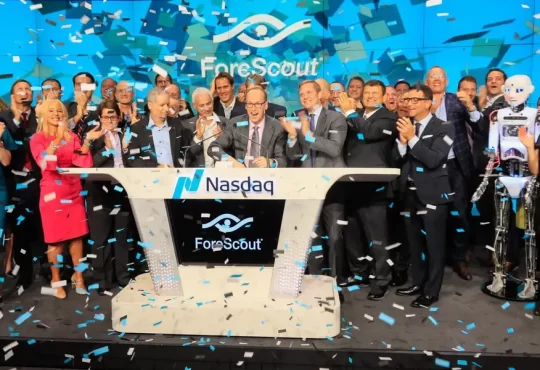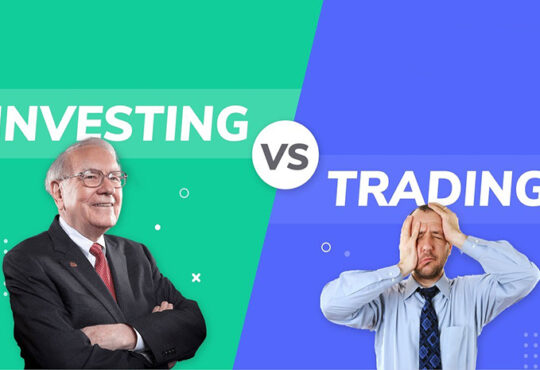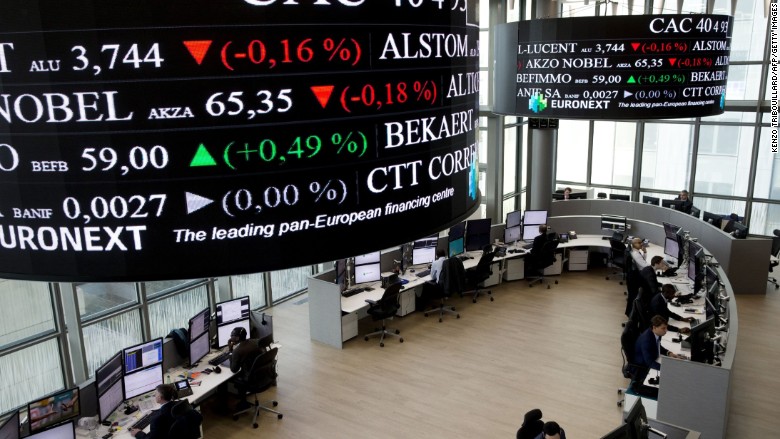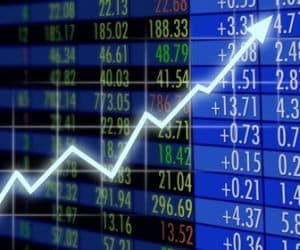
The Best Large Cap Stocks Guide of 2023

Welcome to our comprehensive guide, “The Ultimate Guide to the Best Large Cap Stocks in 2023.”
What to Expect from Our Guide ?
✅In-Depth Analysis (We will dive deep into the fundamentals of this companies)
✅Top Picks (Discover our carefully curated list of the best large-cap stocks for 2023)
✅Practical Tips (Whether you’re a novice or a pro)
What Are Large-Cap Stocks?
Large-cap stocks, short for “large-capitalization stocks,” represent shares of companies with the largest market capitalizations in the stock market.
Market capitalization, is calculated by multiplying the total number of a company’s outstanding shares by the current market price per share.
Companies with a market cap typically exceeding $10 billion or more are considered large-cap.
Why Are Large-Cap Stocks so Significant ?
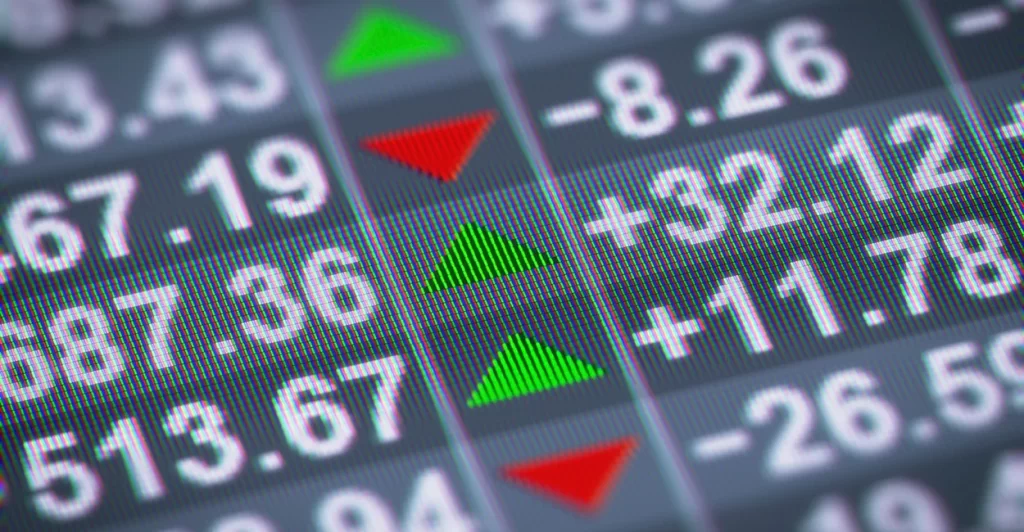
Large-cap stocks are significant in the investment world because they offer stability, income potential, and lower risk compared to smaller-cap stocks.
Here, you will find other 7 reasons on why they are significant, like:
- These type of companies are known for their stability and reliability (They tend to have diverse revenue streams and solid financial structures, making them less prone to extreme price fluctuations)
- Many large-cap companies have a history of paying dividends to their shareholders (These dividends can provide a consistent stream of income for us investors)
- Large-cap stocks often include “blue-chip” companies (These companies are household names, known for their quality products, services, and very strong market positions)
- Tend to have high trading volumes (This liquidity provides flexibility and accessibility)
- Mutual funds, pension funds, and hedge funds, frequently invest in large-cap stocks (This institutional interest can contribute to price stability and liquidity)
- Many large-cap companies operate on a global scale (Investing in large-cap stocks can provide exposure to international markets)
- Large-cap stocks are generally considered less risky than smaller-cap stocks (While no investment is entirely risk-free, their established market positions and financial resources make them more resilient during economic downturns)
Benefits and Disadvantages of Investing in Large Cap Stocks
If you want to invest in large cap stocks , certainly, you would like to know before, some of the core benefits and disadvantages.
So here’s the list of the core advantages :
- Stability
- Dividend Income
- Established Track Records
- Liquidity
- Global Presence
- Institutional Interest
- Market Leadership
- Economic Resilience
But, as we know, there are also some disadvantages like:
- Lower Growth Potential
- Lower Dividend Yields
- Higher Valuations
- Reduced Risk/Reward Ratio
- Dependency on Key Executives
What Industries Are Dominated by Large-Cap Companies?
Large-cap companies can be found across various industries, but some industries tend to have a higher concentration of large-cap firms.
Here are 11 industries that are often dominated by large-cap companies:
- Technology ( like Apple, Microsoft, Alphabet, Meta Platforms, Amazon.com, Tesla, Nvidia Corporation, Intel Corporation, Cisco Systems, Adobe Inc. )
- Consumer Goods ( Like Coca Cola Company, Procter & Gamble, PepsiCo, Colgate Palmolive Company, Mondelez International, Kellogg Company )
- Financial Services (We have companies like, Berkshire Hathaway, Mastercard, Visa , Wells Fargo, American Express )
- Healthcare ( Like, Johnson & Johnson, Pfizer, Abbott Laboratories, Amgen, Gilead Sciences or Medtronic)
- Energy ( In this sector, we can put for example, TotalEnergies, Occidental Petroleum Corporation or the Exxon Mobil Corporation)
- Retail ( In this industry, and all of us, we have either already heard them mentioned or seen them in person. We have companies like, Walmart, The Home Depot, Amazon.com , Alibaba, Costco and Target Corporation )
- Industrial and Manufacturing (like, General Electric, The Boeing Company, 3M, Siemens, Honeywell International)
- Telecommunications (like, Vodafone Group, AT&T, Deutsche Telekom, Orange)
- Utilities ( In this field, we can put Edison International, Sempra Energy, Southern Company or the American Electric Power Company)
- Consumer Discretionary (In this industry we have companies, like , Nike, Ford Motor, The Coca-Cola Company, Starbucks Corporation, McDonald’s, Walt Disney, Toyota Motor)
- Real Estate (Last but not less important we have this sector, where we have companies like, Prologis, Realty Income Corporation, Ventas, Equity Residential, Simon Property Group)
These examples illustrate the diversity of large-cap companies across various industries.
And if you are asking yourself, why certain companies appear at the same time in different sectors or industries, I have the answer. Companies can operate in different sectors or industries simultaneously. This is known as “conglomerate diversification” or “conglomerate structure.” This companies do this in order to diversify, identify growth opportunities or optimize their financial performance.
Best Large Cap Stocks for 2023

Starbucks Corporation
- Starbucks is a global coffeehouse chain, founded in 1971. It operates over 32,000 stores worldwide, serving coffee, beverages, and food items.
- Business Model: Starbucks follows a retail model. It generates revenue primarily from the sale of coffee, specialty beverages, and merchandise.
- Market Position and Competition: Starbucks is a market leader in the coffee industry.
McDonald’s Corporation
- McDonald’s is a global fast-food restaurant chain, founded in 1955. It is one of the world’s most recognizable and widespread fast-food brands.
- Business Model: McDonald’s operates a franchise model. It generates revenue through the sale of fast-food items, beverages, and franchising fees.
- Market Position and Competition: McDonald’s is a dominant player in the fast-food industry, competing with chains like Burger King, Wendy’s, and Subway.
NVIDIA Corporation
- NVIDIA is a technology company, founded in 1993. It is a leading provider of graphics processing units (GPUs) and AI computing platforms.
check this useful post, if you want to know the best gpus for mining: The Best And Powerful GPUs for Mining
- Business Model: NVIDIA generates revenue primarily from the sale of GPUs for gaming, data centers, and AI applications.
- Market Position and Competition: NVIDIA holds a prominent position in the GPU market.
Tesla, Inc.
- Tesla, Inc. is an electric vehicle and clean energy company, founded in 2003. It is a pioneer in electric vehicle production and renewable energy solutions.
- Business Model: Tesla generates revenue from the sale of electric vehicles, energy storage products, solar energy systems, and software services.
- Market Position and Competition: Tesla is a leader in electric vehicle manufacturing.
Taiwan Semiconductor Manufacturing Company (TSMC)
- TSMC is a semiconductor foundry headquartered in Hsinchu, Taiwan, founded in 1987. It is one of the world’s leading manufacturers of semiconductors and integrated circuits.
- Business Model: TSMC operates as a pure-play semiconductor foundry, manufacturing chips for a wide range of customers, including leading technology companies.
- Market Position and Competition: TSMC holds a dominant position in the semiconductor manufacturing industry.
Apple Inc.
- Apple Inc. is a technology company, founded in 1976. It is one of the world’s largest and most iconic technology companies, known for its consumer electronics, software, and services.
- Business Model: Apple generates revenue from the sale of a wide range of products, including iPhones, iPads, Macs, wearables, and services like the App Store and Apple Music.
- Market Position and Competition: Apple is a dominant player in the consumer electronics industry.
Amazon.com, Inc.
- Amazon.com, Inc. is a multinational technology and e-commerce company, founded in 1994. It is one of the world’s largest online retailers and cloud computing providers.
- Business Model: Amazon generates revenue from e-commerce sales, Amazon Web Services (AWS), subscription services (Amazon Prime), and advertising.
- Market Position and Competition: Amazon is a dominant force in e-commerce and cloud computing.
Tips for Beginners

Analyzing and evaluating large-cap stocks requires a comprehensive approach that considers various factors, including financial metrics, market trends, and company fundamentals.
Here’s a detailed guide on how to know whether you have in front of you a good large-cap stock or not:
First of all, you need to check some financial metrics, like :
- Price-to-Earnings (P/E) Ratio ( It should be low, but not extremely low )
- Price-to-Earnings Growth (PEG) Ratio (A good PEG is less than 1)
- Dividend Yield ( You want to see a company that have a consistent or increasing dividend yield)
- Return on Equity (ROE) (The higher the better)
- Debt-to-Equity Ratio ( The lower the better)
After you want to check and monitor:
- The company’s market cap trends over the years (You want to see a company that over the years, mantain or grow their market cap. )
- Historical stock price movements
- Healthy trading volume (It is always better to stay away from stocks with consistently low trading volume)
And finally but, absolutely not less important, you need to analyse the company fundamentals and compare it, with the main competitors. So here’s my list of the things that I check always, and I hope you will remember:
- Evaluate the company’s historical revenue and earnings growth (I want to see consistent growth)
- Assess the company’s profit margins, like gross margin, operating margin, net margin (I want to see this numbers expanding over time)
- Analyze the company’s competitive position within its industry (I look for MOATs, competitive advantage or barrier that a company has that makes it difficult for other companies to compete with. Like the brand strength)
- Research the company’s management team (When I analyze a company, I want to see that it is managed by a strong and experienced leadership)
- Investigate the company’s product or service pipeline (I want to see both, innovation and also a strong product roadmap)
Remember that no single metric or analysis can guarantee the success of an investment. And those are only a part of the metrics, that you should check before thinking of buying.
Check this post if you want to know more about fundamental analysis :
Final Thoghts
If you like me, you love reading, here you will find some very useful books, that cover this topic, and will give you an hedge over the other investors.
- “The Warren Buffett Way” by Robert G. Hagstrom
- “Quality Investing: Owning the Best Companies for the Long Term” by Lawrence A. Cunningham and Patrick O’Shaughnessy
- “The Little Book of Big Dividends: A Safe Formula for Guaranteed Returns” by Charles B. Carlson
- “Stocks for the Long Run” by Jeremy J. Siegel
- “Value Investing: From Graham to Buffett and Beyond” by Bruce C. N. Greenwald
Recent Posts
- Stablecoin vs Fiat Currency : Who Win This Great Debate ?
 In the ongoing debate of Stablecoin vs Fiat, as the global economy transforms, questions arise about the roles these currencies play in shaping our financial future. This exploration dives into the core of the debate, highlighting the differences, benefits, and…
In the ongoing debate of Stablecoin vs Fiat, as the global economy transforms, questions arise about the roles these currencies play in shaping our financial future. This exploration dives into the core of the debate, highlighting the differences, benefits, and… - IPO Explained : How to Start the Right Way
 IPO explained simply. Ever thought about how companies go from being private to being in the stock market spotlight? It’s through something called an Initial Public Offering, or IPO. It’s like a big debut for companies, with lots of potential…
IPO explained simply. Ever thought about how companies go from being private to being in the stock market spotlight? It’s through something called an Initial Public Offering, or IPO. It’s like a big debut for companies, with lots of potential… - Trading vs Investing : Wich is the Better Solution?
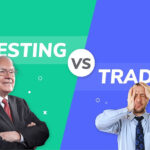 In the world of money, deciding between trading vs investing is a big deal. It’s like choosing a path that will seriously affect your financial future. Trading and investing are different ways to handle your money, and the choice you…
In the world of money, deciding between trading vs investing is a big deal. It’s like choosing a path that will seriously affect your financial future. Trading and investing are different ways to handle your money, and the choice you… - What is the Most Secure Stablecoin of 2023 ?
 We’ll take a deep dive into the world of stablecoins, exploring their types, evaluating criteria for security, and identifying the most secure stablecoin. The cryptocurrency market is in constant evolution and with new players entering the scene, security has become…
We’ll take a deep dive into the world of stablecoins, exploring their types, evaluating criteria for security, and identifying the most secure stablecoin. The cryptocurrency market is in constant evolution and with new players entering the scene, security has become… - Penny Stocks vs Crypto : What is the Best Solution ?
 In this exploration of Penny Stocks vs. Crypto, we will delve into the heart of these investment choices. Penny Stocks and Cryptocurrencies, each of these asset classes carries its own unique set of promises and perils, offering the potential for…
In this exploration of Penny Stocks vs. Crypto, we will delve into the heart of these investment choices. Penny Stocks and Cryptocurrencies, each of these asset classes carries its own unique set of promises and perils, offering the potential for…
